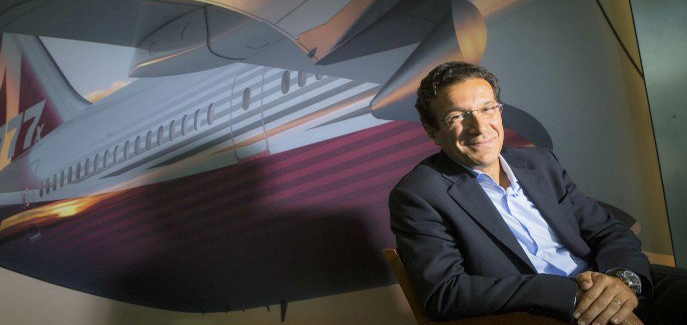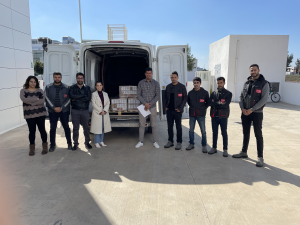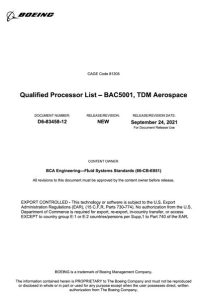
Despite the setbacks of the 737 Max, Boeing plans to continue its development plan in Morocco.
The Kingdom’s strategic vision to develop its aerospace industry is aligned with Boeing’s business objectives.
The manufacturer is working with its suppliers on their production plans to minimize operational disruptions and the financial impact of the current production rates revised downward for the 737 MAX.
Interviewed by Badr Chaou
Finance News Hebdo: What can you tell us about Boeing’s activity in Morocco?
Ihssane Mounir: We are proud of Boeing’s relationship of trust with Morocco and its aviation industry for nearly 50 years. This relationship started in 1970 when Royal Air Maroc (RAM) took delivery of a Boeing 727. The Moroccan national airline is an excellent customer that we always accompany: this year, for example, the RAM has enriched its operations with a second model of our family of super efficient Dreamliner aircraft, with the 787-9. In total, the RAM has five 787-8 and now four 787-9.
In 2001, we expanded our relationship to the manufacture of aerospace parts. We partnered with RAM and Safran Electrical and Power to create Matis Aerospace. This supplier of high quality products now employs more than 1,000 people who manufacture electrical harnesses and aircraft cables for Boeing and other companies in the industry.
In 2016, the maturity of the Moroccan aeronautical ecosystem, the development of infrastructure and the unwavering determination of the Ministry of Industry to develop in partnership with Boeing, led to the decision to sign a protocol for agreement (see Box 1) with the aim of generating new sources of annual export earnings by hosting Boeing suppliers and thus creating new skilled jobs. The partnership has already demonstrated the important role it plays in our success by making Morocco a “Best Value Country” worthy of interest for our supplier base.
FNH: Where is the Boeing ecosystem in Morocco?
IM: To date, and in three years, Boeing has contacted more than 300 suppliers. We have identified the capabilities of the Moroccan ecosystem and aligned them with our purchasing categories and key strategies to generate maximum value, reduce supply chain risks and technological breakthroughs. We also engaged in other activities to share information about the Moroccan aviation industry and its talented workforce, as well as the government’s investments and measures to encourage Boeing’s suppliers to gain a foothold. in Morocco.
A few months ago, we announced that nine direct and indirect suppliers already benefit from this Memorandum of Understanding and now have strong strengths to be highly competitive in the aerospace market. I can mention, for example, the company TDM Aerospace for the production, in Casablanca, of titanium tubes and pipes for the 787 Dreamliner. We welcome efforts to achieve the goal shared by Boeing and the Kingdom of Morocco to create 8,700 jobs with an economic impact of $ 1 billion by 2028.
FNH: Is it going as planned?
IM: Absolutely. To the extent that business decisions and significant investments take a certain amount of time, especially in our high-tech industry, the progress we have made is quite remarkable. In addition, our efforts and discussions continue as our suppliers assess the value that Morocco can bring to meet their business needs and Boeing’s requirements to succeed in a competitive and fully competitive commercial aviation market. growth.
FNH: The crisis that Boeing is experiencing could it call into question its projects in Morocco?
IM: Absolutely not. Our commitment to Morocco is total. Royal Air Maroc has always been and continues to be a valued customer of Boeing, and we are sorry to have created disruption to the RAM. One of our priorities is to maintain the confidence of the Moroccan national airline, to support it in every possible way to restore confidence in the 737 MAX (see Box 2), and to ensure the return to service of the in his fleet, safely. We are in constant contact with the RAM to support it in this difficult period.
Regarding the ecosystem, we turned to Morocco because we appreciate the density of its supply chain, the quality of its infrastructure, the talent of its workforce and its ability to produce at very low costs. competitive.
We are grateful to the Kingdom for its partnership and trust in Boeing, and regularly update RAM on the steps we are taking to return the 737 MAX to service, as well as our actions to regain the trust of our customers. passengers.
More generally, I would add that the entire Boeing Group is, and remains very active in Morocco, not only in terms of commercial aviation, but also in the military field with the helicopter “Heavy Chinook” and ongoing discussions about adding new capabilities. With regard to the workforce, we have established partnerships with EFE Maroc, the Moroccan foundation for education for employment whose vocation is to act for the employability of young people, as well as with the INJAZ AI-Maghreb Association.
FNH: Has there been an impact on the ecosystem in Morocco following the crisis?
IM: We are staying the course we have set ourselves. Our deadline is, I remind you, 2028. Morocco’s strategic vision to develop its aerospace industry is aligned with Boeing’s commercial objectives. Growth prospects and development opportunities in Morocco are very important, and our mission is to help give the Kingdom the means to realize its enormous potential, through our network of equipment manufacturers. We continue to work together to achieve our goals.
FNH: And on orders from Morocco?
IM: If you refer to an eventual order from RAM to expand its fleet, we do not disclose the discussions we have with our clients, and it is up to the RAM to communicate on its future needs.
Our current priority is to best support the company in the difficult period we are going through, and to ensure that the 737 MAX is back in service safely.
FNH: Is there an industrial link between the Boeing 737 Max and the ecosystem in Morocco?
IM: Our supply chain is very diverse, and many Boeing partners around the world provide equipment and tools for several Boeing programs, both commercial and military. We are working with our suppliers on their production plans to minimize operational disruptions and the financial impact of the current production rates revised downward for the 737 MAX (42 aircraft produced per month since mid-April, against 52 previously ).
FNH: How is Boeing’s “Made in Morocco” customer portfolio doing?
IM: All Boeing customers are likely to benefit from the excellence of the Moroccan ecosystem, because the equipment and tools from Morocco are then destined for Boeing platforms assembled in the United States and then delivered to our customers throughout the world. world.
FNH: What are your prospects for the desired ecosystem in Morocco?
IM: We continue to move forward to meet the ambitious goals we have set for ourselves by 2028. We will regularly take steps to keep you informed of its development. We have a dedicated team working continuously on this important project. ◆
Box 1: Boeing-Morocco, a gold deal
In 2016, Boeing signed a memorandum of understanding with the Kingdom for the creation of an aeronautical equipment ecosystem. The latter aims to organize a complete sourcing platform based in Morocco with the implementation of approximately 120 Boeing suppliers, generating 8,700 new jobs. This protocol is supposed to enable the realization of an export turnover of one billion dollars annually. With respect to human capital, the training needs of the ecosystem would require dedicated training programs, specifically designed by Boeing. This contract is the result of a convergence between the operational requirements of the world leader, seeking competitive conditions and advantages, and the country’s goal of expanding its industrial capacity.
As a reminder, this Memorandum of Understanding was signed by the Minister of Industry, Investment, Trade, and Digital Economy, Moulay Hafid Elalamy, and Boeing Commercial Airplanes President Ray Conner, at Royal Palace in Tangier in the presence of King Mohammed VI.
Box 2: The setbacks of the 737 MAX
The current Boeing crisis is due to its “Boeing 737 MAX” aircraft, which has been grounded around the world since last March following two collisions in five months. The first in Indonesia and the second in Ethiopia, killing 346 people. A situation that led to the discontinuation of the production of the 737 MAX model, as well as the breaking of orders whose financial impact was felt on the accounts of the American manufacturer, since this model accounted for 80% of the book. Boeing orders in mid-March 2019 and a third of profits in 2018, according to some experts. The impact in terms of images is no longer negligible, following the two successive accidents of a plane that flew a year and a half. Will the Boeing 737 MAX return to the air soon? The US Aviation Regulator “Federation Aviation Administration (FAA)” is in any case to announce that tests on the simulator as part of the validation process of the new procedures on the Boeing 737 MAX will be operated.
Boeing is reprogramming software for an anti-stall system at the center of both accidents, which the FAA must approve before the plane flies again.



